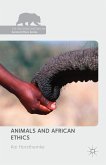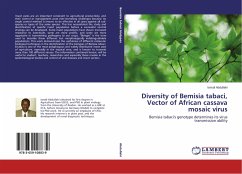This book develops a unified vision of the ecology of dry savannas, a little studied ecosystem.
Savannas cover approximately half of the African land surface and one fifth of the land surface of the world. They are one of the most important, but least understood terrestrial ecosystems. They are the basis of the African livestock industry and the wildlife they support is of key importance in bringing in tourists. The Nylsvley area in South Africa is one of the most intensively studied savanna regions in the world and as such it is a key source of data and theory relating to this important tropical biome. The South African Savanna Biome Programme was set up to develop the understanding necessary to predict changes in the ecosystem stability induced by both natural and man-made stresses. This book provides a synthesis of the programme's sixteen years of research at Nylsvley and aims to develop a unified vision of the ecology of the dry savanna.
Table of content:
Preface; Part I. Nylsvley: An African Savanna: 1. African savannas; 2. The people of Nylsvley; 3. The climate of Nylsvley; 4. Geology, landform and soils; 5. The Nylsvley biota; Part II. The Key Determinants: Water, Nutrients, Fire, and Herbivory: 6. Water; 7. Nutrients; 8. Fire; 9. Herbivory; Part III. The Carbon Cycle: 10. Primary production; 11. Decomposition; Part IV. Community and Landscape Pattern and Change: 12. Rich savanna, poor savanna; 13. Community structure, composition and dynamics; 14. Tree-grass interactions; 15. Plant-animal interactions; Part V. Lessons From Nylsvley: 16. An overview of savanna ecology; 17. Managing savannas; 18. Reflections on ecosystem studies; References; Index.
Hinweis: Dieser Artikel kann nur an eine deutsche Lieferadresse ausgeliefert werden.
Savannas cover approximately half of the African land surface and one fifth of the land surface of the world. They are one of the most important, but least understood terrestrial ecosystems. They are the basis of the African livestock industry and the wildlife they support is of key importance in bringing in tourists. The Nylsvley area in South Africa is one of the most intensively studied savanna regions in the world and as such it is a key source of data and theory relating to this important tropical biome. The South African Savanna Biome Programme was set up to develop the understanding necessary to predict changes in the ecosystem stability induced by both natural and man-made stresses. This book provides a synthesis of the programme's sixteen years of research at Nylsvley and aims to develop a unified vision of the ecology of the dry savanna.
Table of content:
Preface; Part I. Nylsvley: An African Savanna: 1. African savannas; 2. The people of Nylsvley; 3. The climate of Nylsvley; 4. Geology, landform and soils; 5. The Nylsvley biota; Part II. The Key Determinants: Water, Nutrients, Fire, and Herbivory: 6. Water; 7. Nutrients; 8. Fire; 9. Herbivory; Part III. The Carbon Cycle: 10. Primary production; 11. Decomposition; Part IV. Community and Landscape Pattern and Change: 12. Rich savanna, poor savanna; 13. Community structure, composition and dynamics; 14. Tree-grass interactions; 15. Plant-animal interactions; Part V. Lessons From Nylsvley: 16. An overview of savanna ecology; 17. Managing savannas; 18. Reflections on ecosystem studies; References; Index.
Hinweis: Dieser Artikel kann nur an eine deutsche Lieferadresse ausgeliefert werden.








